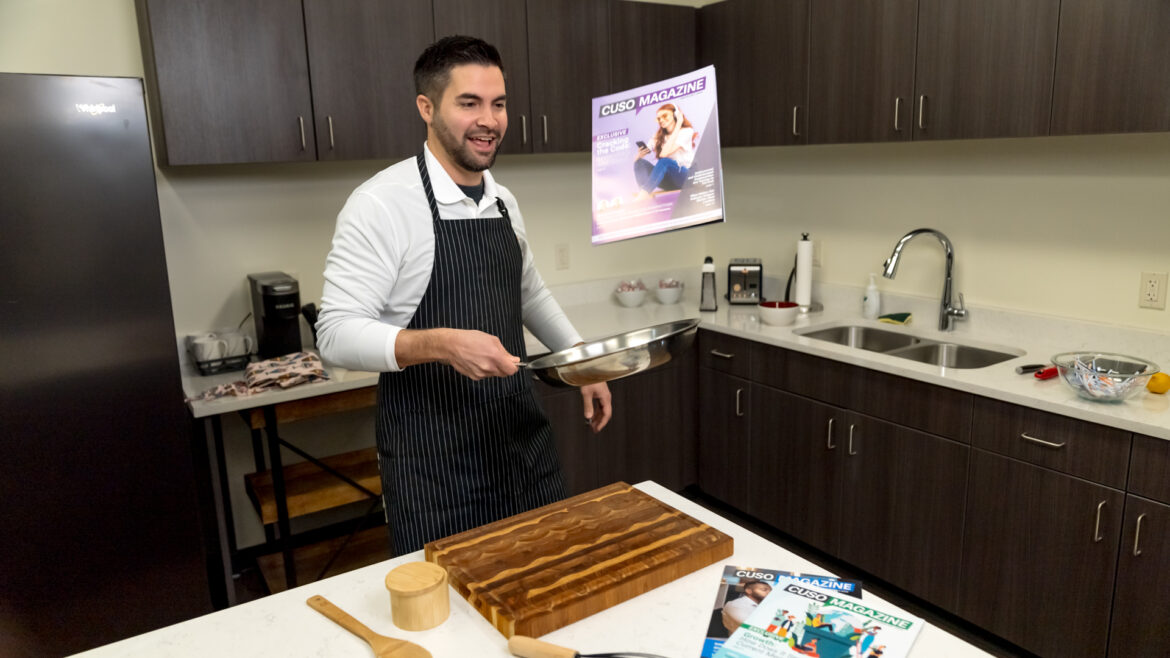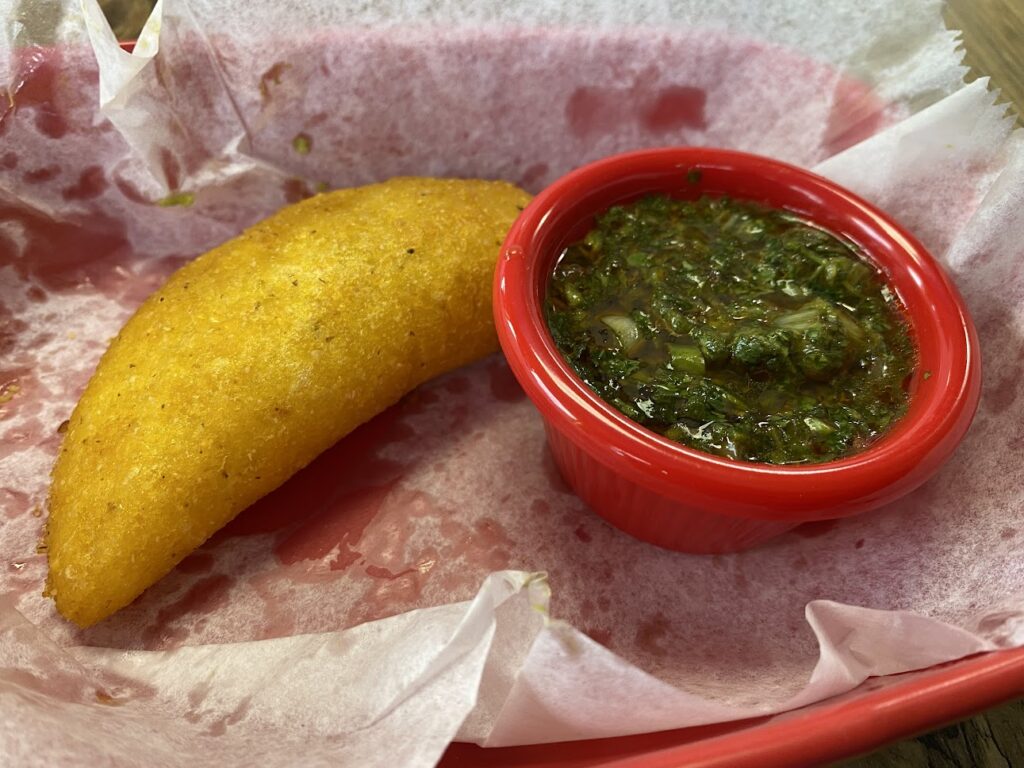Welcome back to another Cooking with CUSO Mag in which we learn about the world of credit unions and food—direct correlations need not apply.
Before we get to the recipe, one that has personal significance, let’s take a look at the wider world of financial cooperatives and learn what they are like in a country near and dear to my heart: Colombia. A country I have visited many, many times over my life as much of my extended family calls it home, but one that until recently I never gave much thought to with regards to its financial cooperatives.
A look at financial cooperatives in Colombia
The financial cooperative system in Colombia is much younger and smaller than we have here in the United States. As of 2019, the World Council of Credit Unions (WOCCU) placed the number of credit unions in Colombia at 174. However, despite the relatively small number of institutions, with over 3.5 million members served, those institutions have reached approximately 7% of the national population.
Credit unions in Colombia, also known as cooperativas financieras, find their origins roughly 60 years ago when the World Council worked to establish the first in an effort to provide financial access in underserved regions.
In 2008, with funding from Colombia’s Banca de las Oportunidades, WOCCU initiated another outreach program aimed at providing credit unions with technical assistance to “strengthen institutional capital, improve governance, and expand savings and credit programs to low-income individuals.” After 6 years, the program resulted in credit union membership growth of over 118,000, bringing much needed products and services to Colombians.
In a third phase, WOCCU provided training and assistance to eight financial institutions to assist them in providing agricultural microcredit options, expanding growth and development.
To help accomplish all of this, WOCCU implemented its Field Officer Banking Model, previously found to be successful when implemented in Mexico. Per WOCCU’s program: “field officer banking combines different microfinance methodologies, such as village banking, community banks, individual microcredit, and village and savings loans, to bring financial services directly to rural and previously unbanked populations. Instead of relying on branch banks and credit unions, field agents travel to villages to provide on-site transactions for clients who otherwise would have to spend significant time and money to access these services.”
The program has largely been successful, with WOCCU claiming that “As of July 2019, the project had brought financial services to 253,055 Colombians, of which 107,510 are being included in the formal financial system for the first time.”
From a structure and governance standpoint, cooperativas financieras operate similarly to their American counterparts. They are owned and controlled by their members, with each member receiving an equal vote. They offer many of the same services, with perhaps a greater focus on microenterprises, and providing assistance to small- and medium-sized businesses that might otherwise not have access to traditional banking services.
And much like the American system in its infancy, one of the primary objectives of financial cooperatives in Colombia is to promote financial inclusion by serving segments of the population that are underserved or excluded by traditional banks. Part of this is serving those turned away by traditional banks, but it also is about reaching areas of the country where other financial institutions have not deemed it profitable to enter.
Today, much of that outreach is being pushed into the use of mobile technology to reach rural and impoverished communities. By equipping the field officers with smartphones and travel printers, their mobility lets them reach more people. And with access to mobile phones growing worldwide, rural communities can still gain access to services where a traditional brick and mortar establishment might not be feasible.
Though tremendous work has been done in Colombia, credit unions face many challenges in securing liquidity, remaining compliant, and increasing operational efficiencies. With hope and hard work though, the Colombian system will continue to grow and flourish, providing many previously un- and underbanked individuals with access to services.
Empanadas for your soul
Now that we’ve learned about another corner of the credit union world, let’s get on with the cooking! But first things first. They are empanadas, not empañadas! (In the same way that jalapeño and habanero have a different sounding ‘n’.)
Wherever you travel in the world, you are sure to find some sort of delicacy that involves a delicious filling stuffed inside a corn or flour pastry. Think calzones, pastries, dumplings, etc. The specifics change from culture to culture, but the result is almost always mouthwatering. Empanadas are one such example extremely popular in Colombia.
If you are familiar with empanadas though, you might recognize them more as the pasties of northern Michigan/the U.K. with a flaky pie-type crust folded and baked. Argentine empanadas, for example, are often made with a flour pastry filled with a mixture of meat, peas, onion, hard-boiled egg, and raisins, and then baked.
Colombian empanadas—at least the ones I fell in love with as a child—are made using a corn-based outer layer, filled, and then fried. The result is a golden treat of meat, potato, onion, seasoned to perfection, and served with aji, a spicy salsa. I have zero reservations in saying that if I could only ever eat one food for the rest of my life, it would be these treats.
Admittedly, they can be a lot of work to prepare, especially considering the frying they require, so if you choose not to attempt this recipe, I urge you to find the nearest Colombian restaurant to you, which is sure to have these on their menu. (Check out both The Latin House and Pochis Colombian Café if you are in the Grand Rapids area.)
Without further ado, let’s get into the recipe. (As I did not have a good photo of any I’ve created, shoutout to Rosita’s Treats in Shelby Township (Metro Detroit) for the excellent example below—I should have taken the picture before I ate most of them!)
Prep: 30 min – 1 hour | Fry: 2 minutes per batch
Ingredients
For the dough:
- 1 1/2 cups precooked yellow cornmeal, i.e. Masarepa (this can likely be found at your local Latin grocer, though it can also be found in typical grocery stores or online–I like the brand Pan)
- 1/2 tbsp sazón Goya (another specialty item you can find in stores and online—it’s basically just a mixture of spices)
- 1/2 tsp salt
- 1 tbsp vegetable oil
- 2 cups water
For the filling:
- 2-3 large potatoes
- 1 chicken or vegetable bouillon cube (or a teaspoon of Better Than Bouillon)
- 1/2 lb ground beef (or a beef/pork mixture)
- 1 cup tomato, diced
- 1/4 cup white onion, diced
- 1/4 cup green onions, chopped
- 1 garlic glove, minced
- 1/2 red bell pepper, diced
- 1/4 tsp black pepper
- 1/2 tsp salt
- 2 tbsp fresh cilantro
For the aji salsa:
- 2 large tomatoes
- 4 green onions
- 1 jalapeño
- 1/2 cup of white vinegar and lime juice—play around with the ratios to get it tasting the way you like!
- 1 clove garlic
- Cilantro to taste
- 2 tsp kosher salt
Instructions
- Peel and place the potatoes in a bot of boiling water with the bouillon tablet and cook for 20-25 minutes until tender. Drain and gently mash the potatoes.
- Get the dough started by placing the masarepa/precooked yellow cornmeal, the sazón Goya, and salt in a large bowl and stir to combine.
- Add the water and vegetable oil, then mix to form a dough.
- Knead until the dough is smooth, roughly 2 minutes and form into a ball. Cover with plastic and allow to rest for 15-20 minutes.
- While the dough is resting, prepare the filling by cooking the onion in a large skillet until translucent. Add the tomatoes, green onions, garlic, bell pepper, cilantro, salt, and pepper and cook down for another 10 minutes.
- Add the meat to the mixture and cook until the meat has browned, roughly 10 minutes.
- Add the filling mixture to the gently mashed potatoes and stir well to combine.
- With the filling made and the dough rested, begin forming discs with a heaping tablespoon of dough mixture rolled into a ball and rolled out very thinly.
- Tip: Use a Ziploc bag cut into two pieces and place the dough balls in between; use a cutting board to press down on the dough to form the discs.
- Place a tablespoon of the mixture in the cent of each disc. Fold the dough over into a semi-circle, using a fork or your fingers to crimp the edges securely—you’ll be frying these, so make sure they’re properly sealed!
- In a large pot, heat a neutral oil over medium heat to 350-370° F. Place a couple of empanadas at a time into the oil, being careful not to overcrowd or drop the temperature of the oil too low. Since the filling is fully cooked, we’re only frying these for a minute or two to get them a nice golden color. Be sure to let the oil come back up to temp before each batch. Remove them using a slotted spoon and allow to rest on paper towel while you fry the rest.
- For the aji, simply combine the roughly chopped ingredients into a blender or food processor and pulse until everything’s equally sized. Don’t overdo it though! You want it salsa-like, not a purée.
- Serve the empanadas with lime and the aji and prepare for deliciousness!
























































